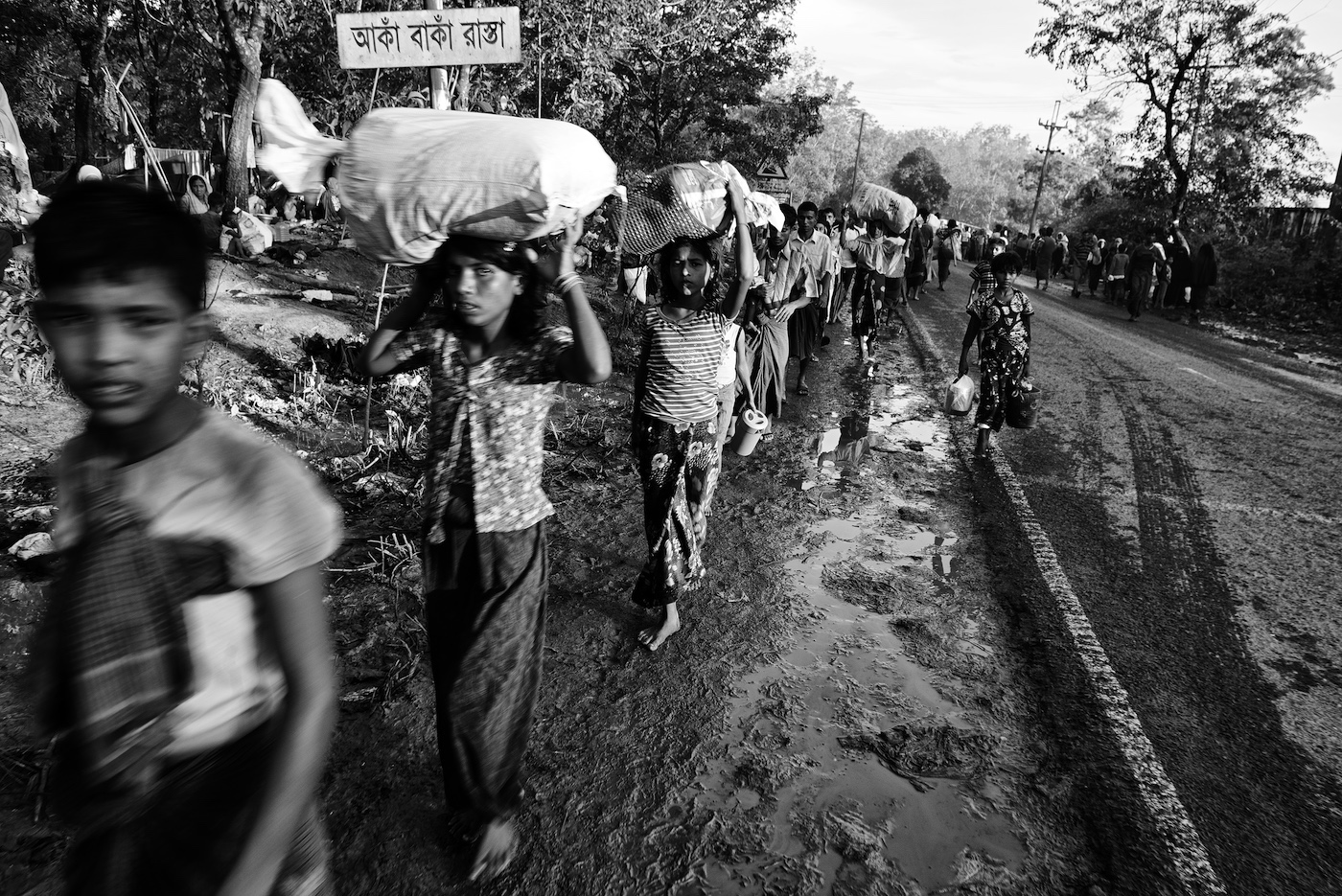November 09, 2020

By Kyra Fox
Earlier this month, the Simon-Skjodt Center held a virtual launch event to share “Burma’s Path to Genocide”—the Museum’s latest online exhibition—with Rohingya community members around the world so they could learn how their stories were being shared.
“Burma’s Path to Genocide” traces how the Rohingya—an ethnic and religious minority—went from citizens to outsiders to victims of genocide as a result of the Burmese government and military’s actions.
The exhibition was informed by nine Rohingya individuals who, in their own words, shared moving and deeply personal stories of surviving the violent attacks in 2017. Their bravery and willingness to share their experiences has allowed the story of the Rohingya genocide to reach nearly 30,000 viewers in 55 countries around the globe.
Since the coronavirus pandemic prevented an in-person launch in the Rohingya refugee camps, Museum staff held the event remotely and invited Rohingya civil society leaders, faith leaders, and community members, including women and youth, to join the conversation.
Decades of persecution and ultimately genocide have scattered the Rohingya community far from their native Burma, also known as Myanmar. The virtual event allowed Rohingya refugees and diaspora from Bangladesh, Thailand, Malaysia, and Australia to join the event, in addition to Rohingya remaining in Burma.
Wai Wai Nu, a Rohingya activist and fellow at the Museum, presented the exhibition in the Rohingya language. She demonstrated how to find the resource online and how to navigate through the historical narrative and stories presented.
Rohingya participants asked many questions about how the exhibition was produced and the impact it would have on victims and survivors. Museum staff explained the measures taken to prevent risks to Rohingya who shared their stories, photos, and videos.
One participant inquired whether evidence collected by the Museum could be used in international criminal proceedings against the perpetrators of the genocide. Another asked how Rohingya could become more involved with the Museum.
Watch the Q&A with Museum experts in English and Rohingya language:
"Thank you so much for creating this exhibit and for inviting us in this discussion today,” said one Rohingya participant. “This is very helpful for us. It does not only help educate the world about our suffering but also helps us remember every detail of what has happened to us in Myanmar."
Though more Rohingya wanted to join the launch event, difficult conditions in Burma and in the Bangladesh refugee camps prevented many from doing so. The Burmese government has blocked the internet for more than a year in several parts of Rakhine State, where most Rohingya living in Burma reside. In the Bangladesh refugee camps, the internet signal is so weak that many Rohingya are unable to use apps like Zoom, and participants had to gather in one spot where the internet connection was strong in order to join the event.
These challenges are just a fraction of the trauma and hardship facing the Rohingya community. As discussed in recent Simon-Skjodt Center reports, the Rohingya continue to face serious threats of genocide and mass atrocities in Burma.
“The participatory and informed approach of this exhibit has been appreciated by many Rohingya survivors in the world largest refugee camps in Bangladesh,” said Wai Wai Nu. “It is important that governments, NGOs, and policymakers also take a similar approach in their actions and the decisions that will impact the lives of Rohingya.”
Overall the virtual launch was a big success and the Museum continues to pursue creative ways to reach victim and survivor communities with our work.
“Many Rohingya feel their experiences and suffering have been acknowledged and documented,” said Nu. “I hope that this exhibit will be an important recognition for taking more effective measures to prevent genocide against Rohingya and to bring about justice and peace for them.”
Kyra Fox is the research assistant at the Simon-Skjodt Center.
View All Blog Posts